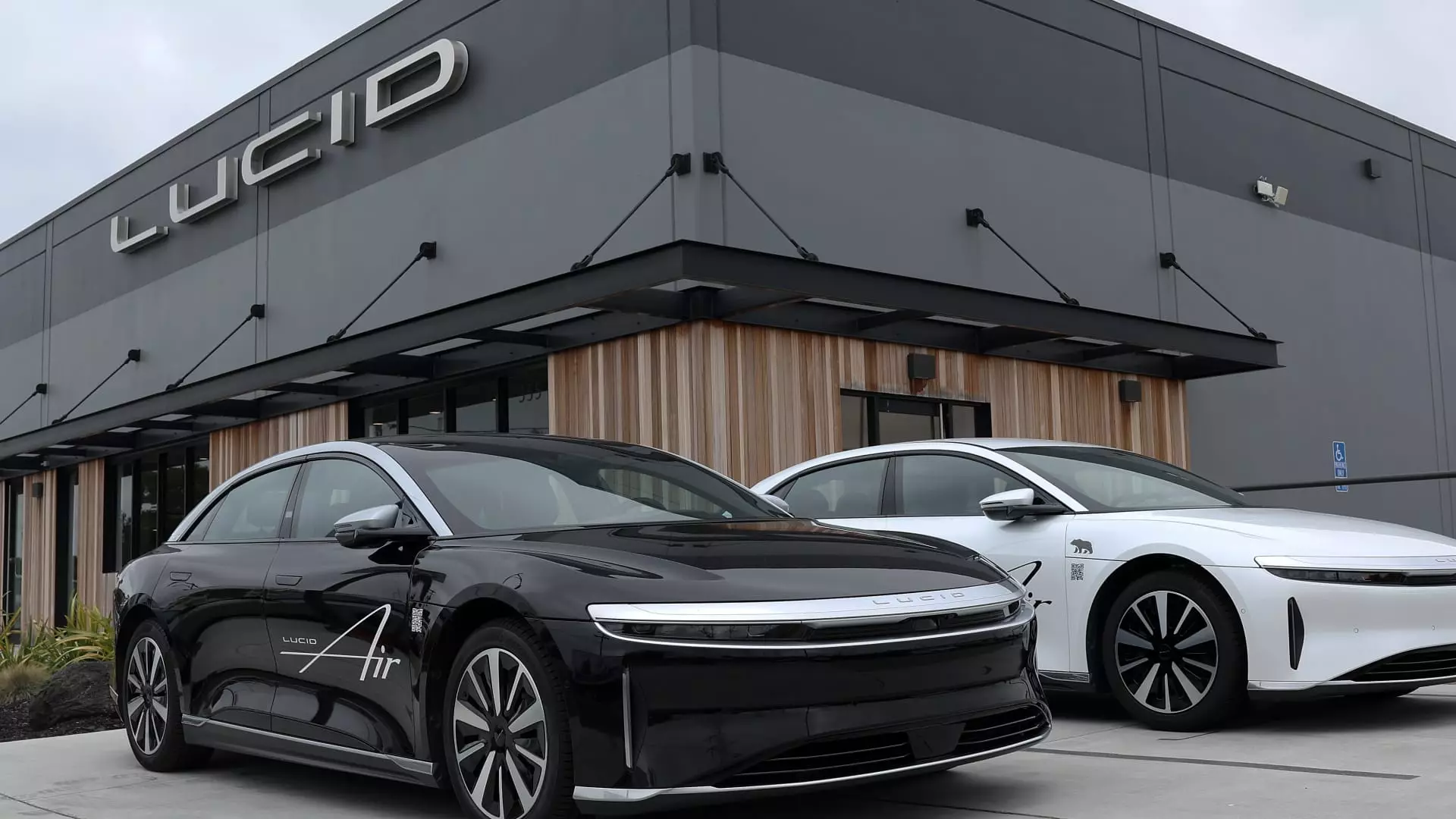In a period marked by significant challenges for electric vehicle manufacturers, Lucid Group managed to marginally surpass Wall Street’s expectations for its third-quarter performance. The results, while still reflective of a growing company in a capital-intensive industry, provided a glimpse into Lucid’s restructuring efforts aimed at enhancing consumer production capabilities, specifically with the forthcoming release of a new SUV. The figures from LSEG show a slight loss per share of 28 cents, which was an improvement over the anticipated 30-cent loss, while revenue reached $200 million, narrowly exceeding the $198 million forecast. Following the announcement, the company’s shares soared more than 8% in after-hours trading, signaling investor relief amid a backdrop of volatility in the electric vehicle sector.
Despite these promising aspects, Lucid’s net loss for the quarter ballooned to $992.5 million, a stark increase from a reported loss of $630.9 million in the same period the previous year. This wide disparity raises questions about the sustainability of Lucid’s business model and the impact of escalating production costs on future profitability. CEO Peter Rawlinson characterized the quarter as a “landmark,” pointing to a record delivery of 2,781 vehicles as a bright spot in the company’s performance. However, the reality of rising operational costs—$324.4 million in research and development and $233.6 million in selling, general, and administrative expenses—highlights the challenges that still persist.
Moving forward, Lucid has taken a strategic stance towards cost management. The automaker aims to maintain or reduce essential expenses while still pursuing aggressive growth in terms of production volume. The company anticipates producing roughly 9,000 vehicles this year, marking a modest increase from last year’s 8,428 units. This ambitious goal will hinge on effective execution of its existing plans, alongside a reported liquidity of $5.16 billion, which should provide a financial buffer through 2026 as new models are developed.
The planned introduction of the Gravity SUV presents an opportunity for Lucid to amplify its market presence. The timing of this launch is crucial, particularly as it enters a segment with increasing competition from established manufacturers. However, the successful execution of the production ramp-up remains uncertain given the company’s challenging financial landscape.
Lucid is currently undergoing a phase of capital-intensive investment. Its ambitious expansions—such as the enlargement of its Arizona factory and the construction of a new plant in Saudi Arabia—illustrate a commitment to scaling up operations in line with market demand. However, investors may remain skittish in light of past shortcomings and the significant cash burn experienced by Lucid this year.
The announced public offering, which involved nearly 262.5 million shares, was a pivotal decision aimed at bolstering the company’s liquidity during this tumultuous period. While some investors viewed this as a necessary strategy to ensure financial viability, the immediate market response was mixed, contributing to Lucid’s stock declining approximately 45% this year.
While Lucid Group has demonstrated resilience and ambition, the road ahead is fraught with uncertainty. The continued widening of losses, coupled with challenges in scaling production effectively, calls for careful navigation of its strategic initiatives. The emphasis on operational cost reductions across all areas of the business is a positive step; nevertheless, the outcomes of these measures will ultimately dictate Lucid’s ability to thrive in an increasingly competitive electric vehicle market. Investors, analysts, and stakeholders alike will be keeping a close watch on how these dynamics unfold as Lucid prepares to launch new products and adjust its operational framework moving forward.

